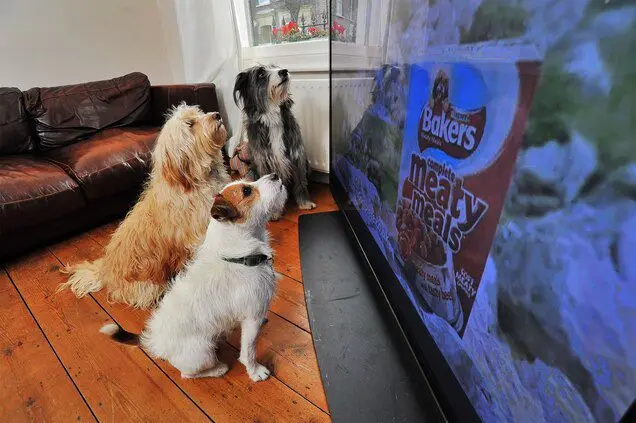
Why do some dogs watch TV?
The fact that the attention of animals is attracted by technology has long been no surprise to scientists. Like humans, dogs are able to distinguish between images and even understand what is shown on the screen in front of them. Two years ago, experts from the University of Central Lancashire found that pets preferred videos with other dogs: whining, barking and growling relatives were of particular interest to the dogs participating in the study. In addition, videos with squeaker toys also attracted their attention.
But not everything is so simple. Interested in dogs TV not so long ago. And pets still see what is happening on the screen in a different way. How?
Contents
Vision of a dog and a person: the main differences
It is known that the vision of dogs differs in many ways from that of humans. In particular, animals perceive fewer colors: for example, the pet does not distinguish between yellow-green and red-orange shades. Also, dogs do not see a clear image on the screen, for them it is slightly blurred. And they are much more responsive to movement, which is why they sometimes turn their heads from side to side in such a funny way when they are watching, for example, a tennis ball on the screen.
However, the decisive role when watching TV is still played by the speed of image perception, the ability to see how quickly the picture changes on the screen. And here the vision of dogs is strikingly different from human.
In order for a person to perceive a sequence of pictures as a moving image, a frequency of 50 hertz is enough, then he does not notice the change of images. For a dog, this figure is much higher and is approximately 70-80 hertz!
In older TVs, the flicker frequency was about 50 hertz. And this was quite enough for people, which cannot be said about dogs. That is why before the TV was not at all interested in four-legged friends. Pets simply perceived it as a set of pictures replacing each other, almost like presentation slides. But modern technology is capable of delivering a frequency of 100 hertz. And for the dog, what is shown on the screen becomes a real video. Almost the same as we see it.
Films and commercials for dogs
Today, many companies are interested in the possibility of showing programs and commercials specifically for dogs. For example, in the US there is already a special “dog channel”, and some marketing agencies are trying to remove ads that would attract four-legged friends.
The problem is that dogs don’t spend much time watching TV. They only need to look at the image for a few minutes, and their interest fades. In the end, smart pets understand that in front of them is not a real object at all, but a virtual one.
TV as a means of combating fear
Sometimes the TV can still be used as entertainment for the pet. This is true when you teach a puppy to calmly stay at home alone. So that the baby does not miss being alone when you go to work, you can leave the TV on at home. The puppy will perceive background sounds. Of course, this does not negate toys, which should also be left for the pet.
But remember that TV and other entertainment will never replace a pet for real communication with the owner. A dog is a social creature that needs the attention, love and care of a person.





